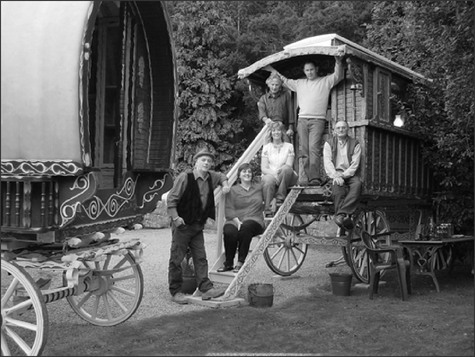

Copyright Warning
All texts/audio/still/motion picture images are strictly copyright to ValleyStream
Media 1980-
copyright holder/s or "unKn". Any unauthorised copying of any images or material
from this website for any use is strictly prohibited without written permission from
the image owners -

Article © Stef Solomon Bate from the book “From the Horse’s Mouth“ published by Tina Carr and Annemarie Schone, © 2014.
clearly down to a Gypsy Scholar John Sampson along with his troop of female disciples, Dora Yates, Kish, Damaris and Eileen. The Bauro Rai was inspired as a boy by Romany Scholar George Borrow and later friend Francis Hindes Groome.
From his base as Librarian at the University College of Liverpool, Sampson religiously journeyed in to the Welsh hills, relentlessly pursuing the Woods and other Welsh Kaule, and methodically chronicling their pure Romani dialect, ancestry and old stories. He was often accompanied by Welsh artist Augustus John, who was also mesmerised by Gypsy life. Sampson joined the newly formed Gypsy Lore Society and soon gained the nav Bauro Rai given by the Gypsies.
In the 1890s Sampson met Edward and Matthew Wood and was excited by their deep Romani
“as a pure Indian idiom”. The Rai began to compile a Romano-
Fifty years on, and the Kaulengo cheriklo (Gypsy wagtail) still bobbles along in Cymru and so do many of the Kaule descendants scattered about the hill and cwms. They may no longer live in tents and roast shoshoi (rabbit) on stick fires, but
most are still proud of their Welsh Romani roots and carry the original Kaule family names such as Wood, Boswell, Lovell, Lock, Herne, Jones, Ingram, Roberts, Price, Florence, Lee, Taylor, Smith and Burton. You can find a Lee in Australia, a Roberts in Canada, and a Lovell in America, for there are no boundaries today.
Whatever image a person’s mind conjures up when the word Gypsy is mentioned -
In 2006 Romani Cymru was established by Cultural Director Stef Solomon Bate as Wales’ first archival and interactive research initiative about the historic Romani tribes of Wales. This informative project digitally records, conserves and promotes what remains of our Welsh Gypsy heritage and language, and brings a clearer picture of what the Kaule people of Wales, past and present, are about, enlightening the general public of their rich history and dispelling the popular myths surrounding their culture.

Stef and Myra with Kaule family and friends -
